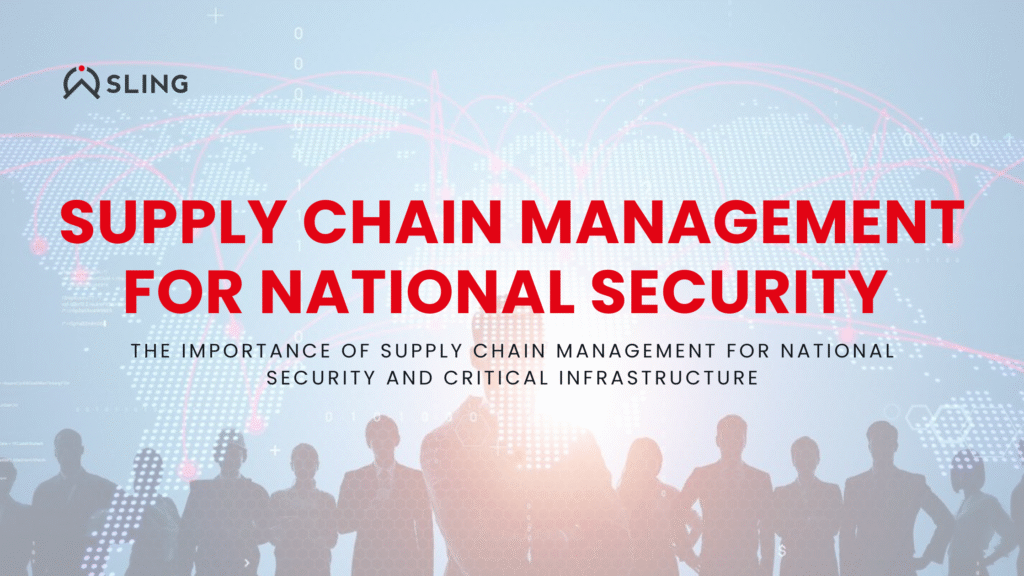Supply chains are the arteries of modern society, delivering energy, technology, and essential goods that underpin national security. When national security is at stake, even a minor disruption can ripple into public safety, economic stability, and geopolitical strength.
National Security & Supply Chain: A Strategic Nexus
The intersection of national security and supply chain management is a critical concern for governments worldwide. As nations grow more interconnected, economically, digitally, and logistically, the resilience of supply chains has become central to the stability and protection of critical infrastructure.
Nearly every government maintains a national designation of critical infrastructure sectors, those deemed essential to public safety, economic stability, and national defense. While terminology and classifications vary, these sectors often include:
| Sector | Examples |
| Energy | Electricity, oil, natural gas, nuclear |
| Information & Communications | Data centers, telecom infrastructure |
| Water and Wastewater | Water treatment plants, pipelines |
| Transportation Systems | Ports, airports, railways |
| Healthcare & Public Health | Hospitals, emergency services |
| Financial Services | Banking systems, stock exchanges |
For example, the United States formally defines 16 critical infrastructure sectors through the Department of Homeland Security (DHS), while the European Union operates under the EPCIP framework (European Programme for Critical Infrastructure Protection), and countries like Japan, India, and Australia maintain similar sectoral classifications through their respective national security agencies.
Why Supply Chains Matter
Regardless of geography, these critical sectors are only as resilient as the global supply chains that support them. Supply chains enable the continuous flow of components, technologies, raw materials, and information necessary for essential operations. When supply chains are compromised, the consequences are not just economic, they can be existential.
Key risks include:
- Substandard or counterfeit components entering operational environments undetected.
- Embedded vulnerabilities in hardware or software that can later be exploited.
- Physical disruptions, such as natural disasters, geopolitical blockades, or targeted sabotage.
These risks are amplified by growing interdependencies across borders. A single compromised supplier can introduce systemic vulnerabilities. As highlighted in the U.S. National Strategy for Global Supply Chain Security, stable and secure supply chains are vital not just for national prosperity, but for defense readiness.
Supply Chains as a Pillar of National Security
Supply chain security has become a recognized pillar of national security worldwide:
- In the U.S., the Supply Chain Resilience Center was established to coordinate risk mitigation across critical sectors.
- The UK’s NPSA and Germany’s BSI perform similar roles, as do national cybersecurity and intelligence agencies in Canada, Australia, Israel, and Singapore.
- Multilateral coordination also plays a growing role in threat intelligence and supply chain defense.
Importantly, state-aligned adversaries increasingly view supply chain disruption as a low-cost, high-impact vector for exerting influence, through both kinetic and cyber means.
Threat Vectors to Supply Chains
Supply chains have become prime targets in modern cyber warfare and state-sponsored operations. As critical infrastructure increasingly depends on third-party vendors, software providers, and global technology ecosystems, adversaries are shifting their focus from direct attacks to more scalable and covert supply chain intrusions.
Cyber supply chain attacks exploit trusted relationships between organizations and their external partners: vendors, software providers, IT service firms, and infrastructure operators.
Unlike direct attacks, which target a single entity, supply chain compromises can cascade across dozens or hundreds of downstream organizations, including hospitals, utilities, defense contractors, and financial institutions.
Strategic Targeting of Infrastructure Supply Chains
State-aligned cyber groups are increasingly leveraging supply chain tactics to gain access to critical infrastructure. These operations often:
- Exploit weak or unmonitored vendors to bypass direct defenses.
- Implant malicious code during development or integration stages.
Target sectors like energy, telecommunications, defense, and transportation due to their strategic value.
Why Supply Chain Risk Management Matters
For governments, enterprises, and national security stakeholders, cyber supply chain threats are now among the most dangerous and difficult to detect. Traditional security measures (firewalls, endpoint protection, internal audits) cannot defend against a compromised vendor or software update.
This is where third-party cyber risk management becomes essential. Platforms like ours:
- Continuously monitor the external attack surface of suppliers.
- Detect indirect exposures, such as shared infrastructure or inherited vulnerabilities.
- Provide early warning of threats circulating in underground forums, leaked credentials, or exploitable misconfigurations.
Benefits of Strong Supply Chain Management for National Security
A well-managed and secure supply chain does more than just protect an organization’s bottom line, it reinforces the broader stability and resilience of a nation. In an era of rising cyber threats and geopolitical uncertainty, supply chain management is a national security imperative. Here are the key benefits of strong supply chain cybersecurity practices, especially as they relate to critical infrastructure and public safety.
1. Resilience Against Cyber Disruptions
Effective supply chain risk management dramatically improves an organization’s ability to withstand and recover from cyber incidents. By identifying vulnerable suppliers, continuously monitoring their exposure, and proactively addressing risks, organizations reduce the likelihood of cascading failures in vital sectors such as energy, finance, healthcare, and telecommunications.
Key outcomes:
- Faster incident detection and response
- Reduced downtime for critical services
- Greater continuity of operations during crises
2. Improved Visibility Across the Ecosystem
Supply chain management enhances visibility into the broader digital ecosystem. When organizations understand the connections between themselves and their third- or fourth-party vendors, they can identify single points of failure, over-concentrations of risk, or unknown dependencies that might otherwise remain hidden.
This transparency is vital for:
- Prioritizing vendor audits
- Making informed procurement decisions
- Uncovering hidden exposure to adversarial nations or high-risk regions
3. Early Threat Detection Through Passive Monitoring
Platforms that monitor third-party risks non-intrusively, through external scanning and threat intelligence, can provide early warning signs of compromise, misconfiguration, or credential leakage. These insights help prevent attackers from moving through the supply chain undetected.
For example:
- Identifying open ports, outdated software, or leaked credentials linked to a vendor
- Monitoring darknet activity and threat actor chatter related to supplier infrastructure
- Detecting domain spoofing or typosquatting attacks
4. Enhanced Geopolitical Readiness
When supply chains are resilient, nations can better withstand politically motivated attacks, economic coercion, or supply disruptions during international conflict. Strong supply chain controls enable governments and critical infrastructure operators to reduce reliance on adversarial entities and respond more swiftly to cross-border threats.
Strategic advantages include:
- Securing national energy supply and defense capabilities
- Reducing economic vulnerability from foreign dependencies
- Building diplomatic leverage through trusted partnerships
5. Public Trust and Reputation Management
Organizations that demonstrate strong supply chain security earn greater trust from the public, partners, and regulators. Conversely, a single third-party breach can erode stakeholder confidence and damage a nation’s reputation for cyber resilience.
Investing in cybersecurity across the supply chain:
- Signals maturity and accountability
- Builds confidence among investors and the public
- Protects national credibility in the face of global scrutiny
Supply chains have become strategic battlegrounds. Threat actors exploit indirect paths, like third-party vendors, to bypass stronger internal defenses. The insight is clear: national security now depends on securing what lies outside the perimeter.
Organizations and governments must treat supply chain risk as a core security issue, not an operational afterthought. In a world of interconnected systems, resilience isn’t just about self-defense, it’s about protecting the entire ecosystem.



